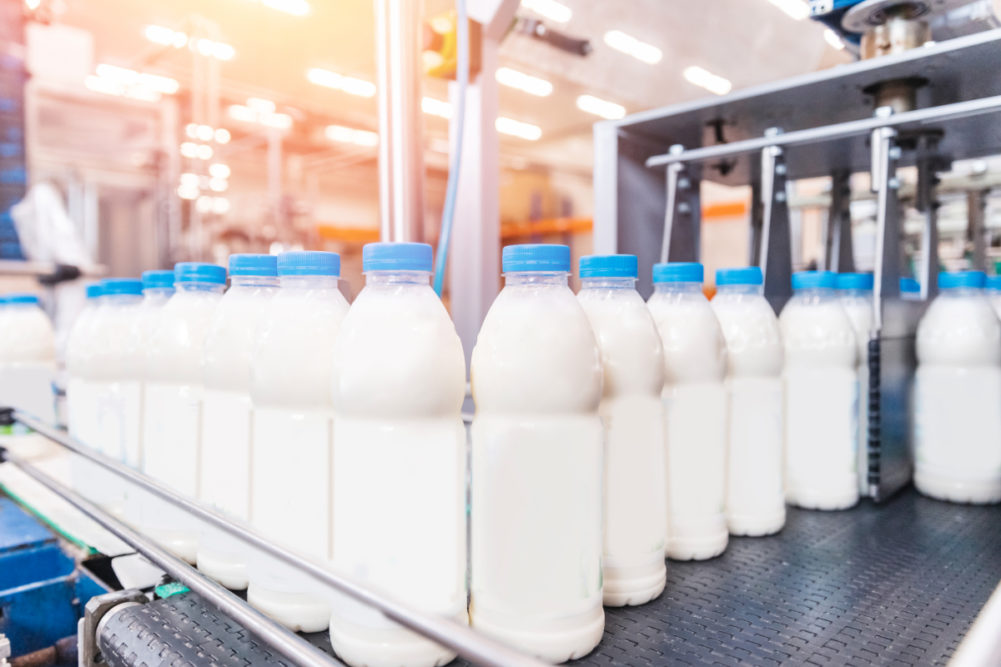CHICAGO — Consumer attitudes toward using antibiotics to treat sick animals may be evolving. The findings of the study, “How does public perception of antibiotic use on dairy farms contribute to self-reported purchasing of organic?” and published in the May 2021 issue of Journal of Food Science may lead to changes in the use of antibiotics in organic livestock.
When dairy cows on conventional and organic farms become ill, federal regulations require farmers to provide medical treatment, including antibiotics, if necessary. The challenge for organic farmers is once antibiotics are administered the cow can never return to organic status. With conventional farming, an antibiotic-treated cow is allowed back into the herd once her milk tests free of antibiotics.
“The US regulates the use of antibiotics in agricultural settings to address the global antibiotic resistance problem,” said Ece Bulut, a post-doctoral associate in the Department of Population Medicine and Diagnostic Sciences at the College of Veterinary Medicine, Cornell University, Ithaca, NY, and the lead researcher in the phone survey of 1,000 random adults conducted in 2018.
The study investigated the US public’s perceptions of organic dairy farming, antibiotic use on dairy farms and whether the perceptions affect a consumer’s self-reported purchasing behavior for organic. One of the objectives was to initiate discussion of the values and conflicts that shape antibiotic use in the current dairy farming system.
The results showed participants’ knowledge about antibiotic-use practices in dairy farming have no effect on their self-reported purchasing behavior for organic or conventional dairy products. However, respondents who were familiar with the regulations of antibiotic use on dairy farms were more likely to oppose the US organic standard on antibiotic use in dairy farming and thought past antibiotic use should not permanently remove a cow’s organic status.
“Our study showed that the US public poorly understands the regulations regarding antibiotic use in dairy cows,” Dr. Bulut said. “The most important characteristics of consumers who self-reported purchasing organic dairy instead of conventional was the higher household income. Also, participants who self-reported purchasing organic more frequently were more likely to prioritize their own health. Knowledge about antibiotic-use practices in dairy farming did not seem to affect purchasing behavior for organic versus conventional dairy products. These findings may start reshaping the US dairy organic market.”
Farmers around the world are trying to reduce antibiotic use in animals. For organic farmers, it currently is quite clear. The findings from the survey suggest it may be possible to allow them the opportunity to properly treat sick cows with antibiotics in a more sustainable manner for organic farming, which would include eventually allowing the cow back into the organic milking herd. This may make organic more attractive to farmers and assist with meeting the growing demand for organic dairy foods.
“Understanding the purchase motivation of consumers for dairy products helps assure that we continue to have a variety of dairy production systems to meet these varied consumer choices,” said Jamie Jonker, chief science officer, vice president of sustainability and scientific affairs, National Milk Producers Federation, Arlington, Va. “This study’s conclusion that ‘the US public poorly understands the regulations regarding antibiotic use in dairy cows’ is not surprising and is consistent with results from other studies.
“Our study showed that the US public poorly understands the regulations regarding antibiotic use in dairy cows.” — Dr. Ece Bulut, Cornell University
“This study does reveal that with an increased understanding of the antibiotic use regulations, there is a ‘higher acceptance of antibiotic use for treatment of illness.’ This outcome suggests that many consumers recognize the importance antibiotics have in animal health and welfare.”
All milk in the US is required to be tested for antibiotics prior to processing, as mandated by the US Food and Drug Administration through the Grade A Pasteurized Milk Ordinance. The FDA reports milk antibiotic test results, and in 2020, only 0.010% of all US milk had an antibiotic residue.
“In the US, any milk that tests positive for an antibiotic residue is disposed,” Mr. Jonker said.
Dr. Bulut said, “There is a need to better inform the public about antibiotic use in animal agriculture. From our survey, it appears that increased understanding is associated with higher acceptance of antibiotic use for treatment of illness in organic dairy industry.”

